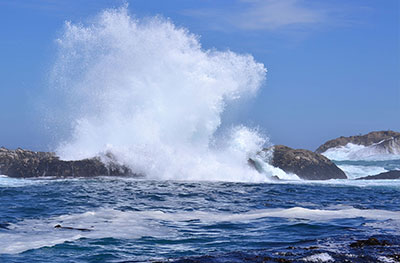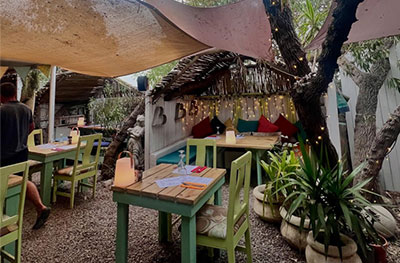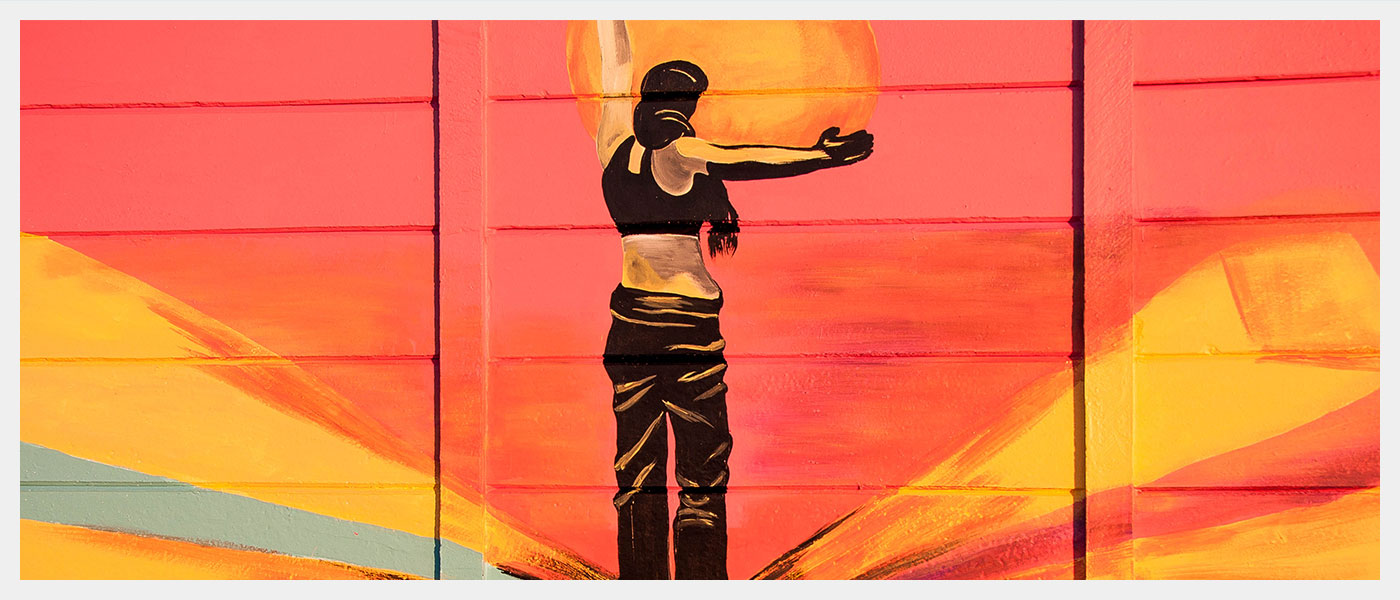
A Wall of Love: Honouring Natalie’s Gift to Paternoster
In every village, there are people who come and go — but once in a while, someone arrives who leaves behind more than just memories. They leave behind something that lingers in the hearts of the community. For Paternoster, one of those people is Natalie.
A Heart for the Children
Natalie arrived in our village with a quiet warmth, a big heart, and a deep love for working with children. Whether it was helping out with the Hoopsig Project, sharing moments of joy on the playground, or simply being present when it mattered most — she poured herself into the lives of the little ones here.
She had a way of connecting — no language barriers, no hesitation, just kindness and care that kids understood instantly. Her time in Paternoster wasn’t just a visit. It was a gift.
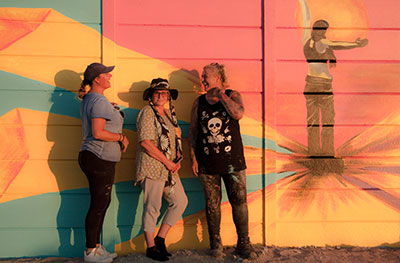 The Mural That Became a Memory
The Mural That Became a Memory
After Natalie’s passing, her loving parents wanted to honour her life and spirit in a way that would reflect the deep connection she had with the children and the village of Paternoster.
They sponsored the creation and painting of a wall — a blank canvas that would become a living tribute to their daughter. It wasn’t just about colour or art; it was about creating something that would keep Natalie’s light shining in a place she held so dear.
Working alongside gifted local artists — Lizbie Lourens of Firehouse Tattoos, Paternoster Operative, and Charmaine Pote, as well and many volunteers including Pelgrim's Place — the wall came to life over the course of a heartfelt week. The project brought the community together, with the sounds of laughter and the sight of paint-streaked hands filling the air.
Every brushstroke was a whisper of love. Every shape, a celebration of her memory. What now stands is more than just a mural — it’s a permanent reminder of compassion, connection, and community.
More Than Paint on a Wall
The mural tells a story — but perhaps even more importantly, it reminds us of Natalie’s spirit. A spirit that believed in giving without expecting, in making things better, and in leaving the world a little brighter than you found it.
While she may never return, her presence is still very much here. It lives in every child who walks past that wall, in every smile it inspires, and in every person who remembers what she gave.
 Danke, Natalie 🇩🇪💙
Danke, Natalie 🇩🇪💙
To Natalie — from all of us in Paternoster:
Thank you. For your time, your heart, your energy, and your art.
Your legacy is painted not only on a wall, but in the soul of this village.
You will always be part of our story.
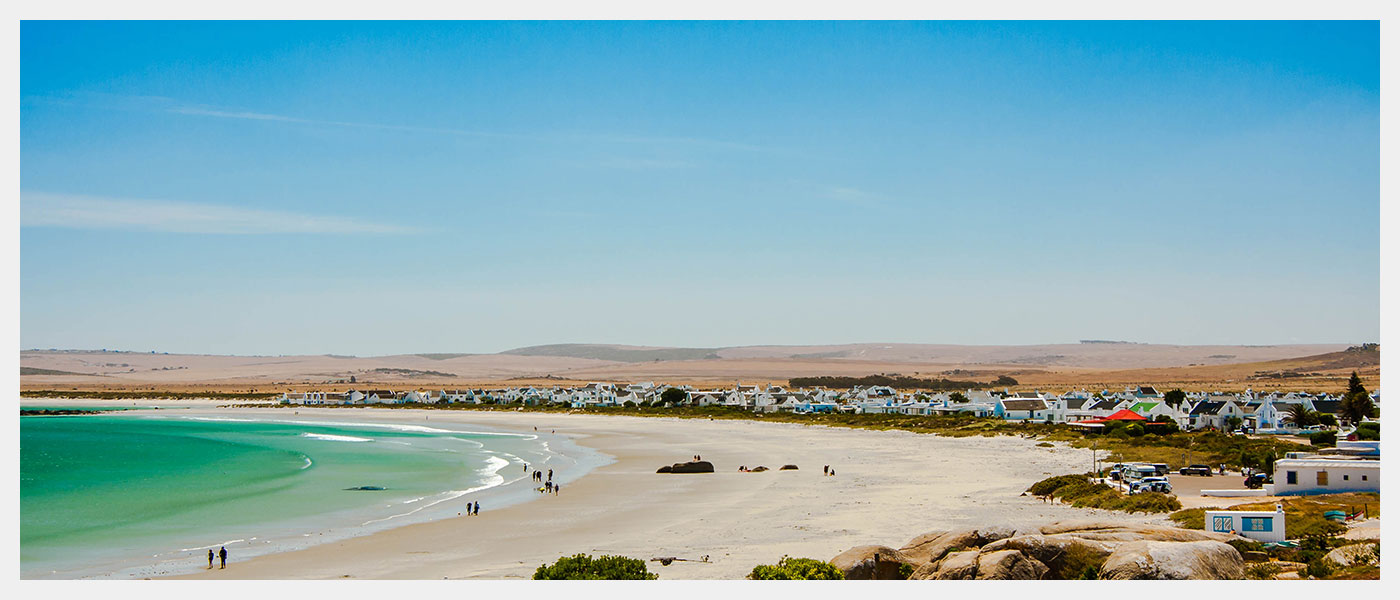
Why Paternoster Stole My Heart: 3 Unmissable Adventures in South Africa’s Coastal Gem
If you're dreaming of a destination where adventure meets serenity, look no further than Paternoster. This charming West Coast village may look sleepy at first glance, but it's bursting with unforgettable experiences—from sunrise dolphin encounters to feasting on fresh seafood under the stars. In this blog, a seasoned traveler shares why Paternoster is one of South Africa’s best-kept secrets—and why it should be on your travel bucket list.
There are places you visit, and then there are places that stay with you. Paternoster, a quaint fishing village tucked away on South Africa’s West Coast, is most definitely the latter. I’ve been fortunate enough to explore some of the world’s most breathtaking destinations, from the cliffs of Amalfi to the rice terraces of Ubud—but nothing prepared me for the magic of Paternoster.
Here, time slows down, the seafood is fresher than you can imagine, and every corner whispers stories of the sea. But beyond its postcard-perfect beauty lies a treasure trove of adventure. Here are three unforgettable experiences that made me fall in love with this coastal haven.
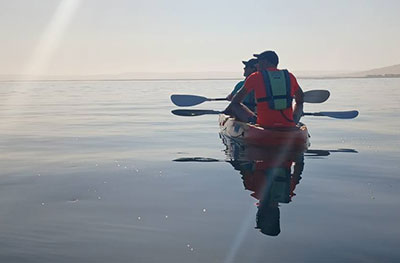 1. Kayaking with Dolphins at Sunrise
1. Kayaking with Dolphins at Sunrise
I’ve kayaked in Ha Long Bay and paddled through the fjords of Norway, but there was something uniquely peaceful about gliding across Paternoster’s glassy waters as the sun peeked over the horizon. Within minutes of launching, a pod of dolphins emerged—graceful, playful, and seemingly just as curious about us as we were about them.
The early morning light, the salty breeze, and the sheer closeness to nature made this one of the most serene moments I’ve ever had on the water. It’s not just a kayak trip—it’s a spiritual reset.
2. Exploring Cape Columbine Nature Reserve
If you’re someone who craves a touch of wilderness with your wanderlust, the Cape Columbine Nature Reserve is a must. Just a short drive from the heart of Paternoster, this rugged coastline is home to fynbos-covered trails, dramatic rock formations, and the iconic Cape Columbine Lighthouse.
I spent hours wandering, camera in hand, completely alone but never lonely. The crashing waves, the cry of seabirds, and the smell of salt and wildflowers—it felt untouched, unspoiled, and deeply grounding.
3. Feasting Like a Local at The Noisy Oyster
No trip to Paternoster would be complete without indulging in its culinary scene, and The Noisy Oyster is the crown jewel. This quirky, colorful eatery is tucked away in a quiet street, but don’t let its playful decor fool you—the food is world-class.
I dined beneath the stars, savoring West Coast mussels in white wine, line fish grilled to perfection, and the kind of chocolate dessert that makes you rethink everything you thought you knew about sweets. It’s a feast, yes—but more than that, it’s a celebration of local flavor and hospitality.
Final Thoughts: Why Paternoster Deserves a Place on Your Bucket List
Paternoster isn’t just another stop on the map. It’s a place that speaks to the soul—wild, warm, and wonderfully welcoming. Whether you’re chasing adventure, craving stillness, or simply searching for something real, you’ll find it here.
And trust me, once you visit, you’ll be planning your return before you even leave.
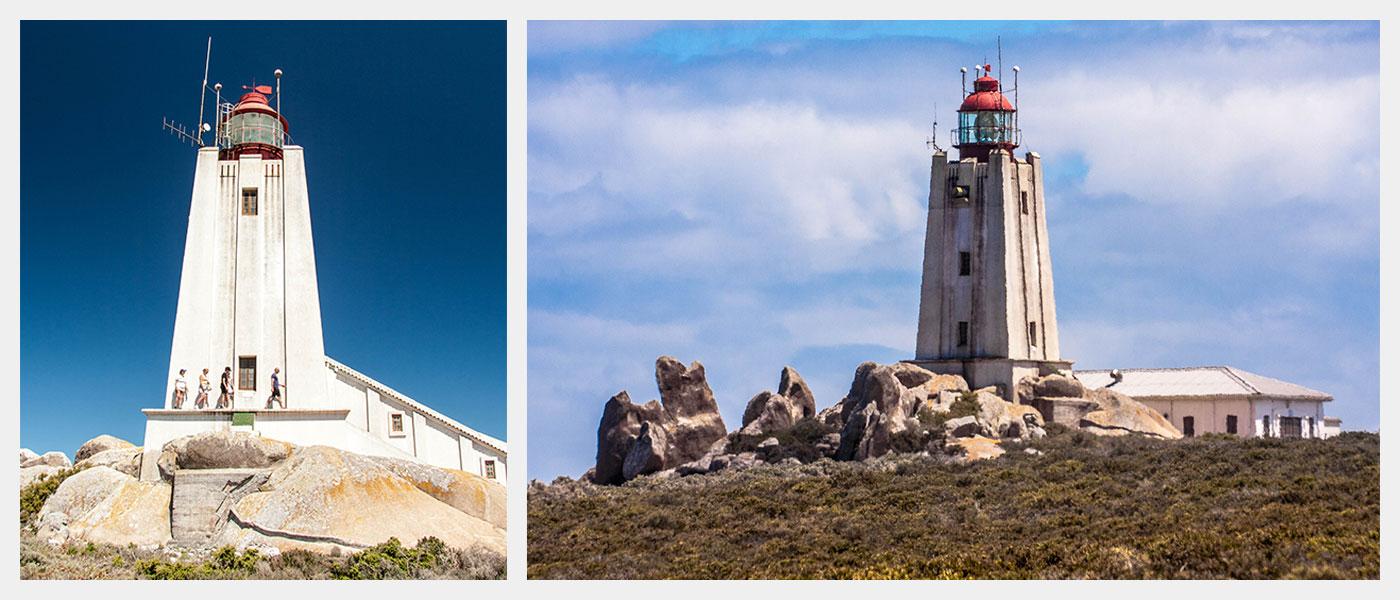
The Story of Cape Columbine & Tietiesbaai
Cape Columbine is a headland just outside Paternoster on South Africa’s West Coast, about 3 km from the fishing village. It is best known for the Cape Columbine Lighthouse, which is the last staffed / manned lighthouse to be built on the South African coast.
The lighthouse was commissioned on October 1, 1936, to improve maritime safety in an area notorious for shipwrecks. The headland is named after the British ship Columbine, which sank off the coast on March 31, 1829.
The wreck was one of many in the region, as the coastline has numerous submerged rocks and reefs.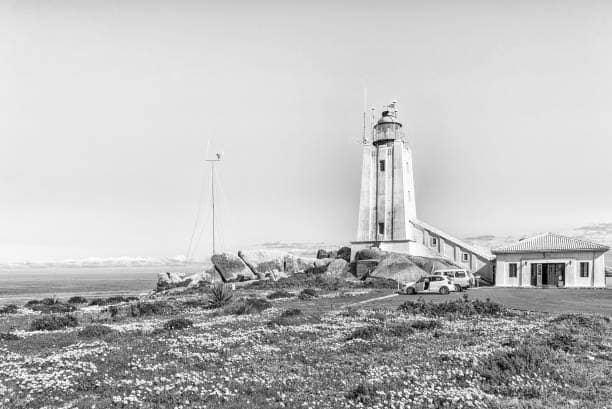
Several ships have run aground in the area, including:
- Columbine (1829)
- SS Saint Lawrence (1876)
- Ismore (1899)
- SS Lisboa (1910)
- SS Haddon Hall (1913)
- SS Malmesbury (1930)
- Haleric (1932)
- SS Columbine (1944, torpedoed)
- Da Gama (1979)
One local legend claims that when the SS Lisboa sank in 1910, barrels of red wine floated ashore. Some were buried by locals and later recovered once customs officials had left.
Before the lighthouse was built, the region lacked navigational aids, despite repeated warnings from mariners. The Lighthouse Commission of 1906 identified Cape Columbine as a priority, but construction was delayed for 30 years due to other projects, such as Dassen Island and Pelican Point lighthouses.
H.C. Cooper, the engineer in charge of South African lighthouses, designed the structure. Instead of the usual round design, he opted for a square tower with recessed walls and heavy corner buttresses. Built on Castle Rock, a granite outcrop, the tower stands 15 metres high, with its light reaching 80 metres above sea level. The lighthouse was the first in South Africa to include three navigational aids: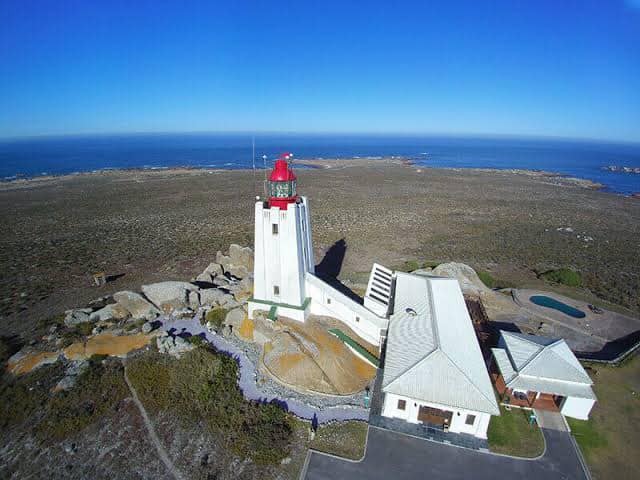
- A light
- A fog signal
- A radio beacon
It was also the first lighthouse to use a lens system designed for a 4 kW incandescent electric lamp, replacing older wick or petroleum burners.
On October 1, 1936, the lighthouse was officially opened. As the sun set, Cooper’s wife switched on the light, sending two white beams over the Atlantic Ocean.
Tietiesbaai is a small bay located south of the lighthouse, within the Columbine Nature Reserve. The area is known for its rugged coastline, marine life, and camping facilities. The waters around Tietiesbaai and Paternoster are rich in crayfish and abalone, attracting both fishermen and poachers.
Today, Cape Columbine and Tietiesbaai are popular destinations for tourists, particularly those interested in history, nature, and coastal activities. The lighthouse remains a key feature of the region, continuing to serve as a navigational aid while also drawing visitors to this historically significant stretch of coastline.

1 Year Bus Stop Reunion
Friends traveling back to Paternoster, a year after their last visit, were so exited to see the changes that have been made to the town.
The best is represented in the photo of all of them sitting in the bus stop at the entrance to Hopland. The first showing the bus stop in it's previous state and then taken this week, September 2024, the completely transformed bus stop.
Nigel, Craig and Blondie (the beautiful 4 legged blonde) had the privilege of meeting Cindy, who coordinated the facelift and got to share this image with her.
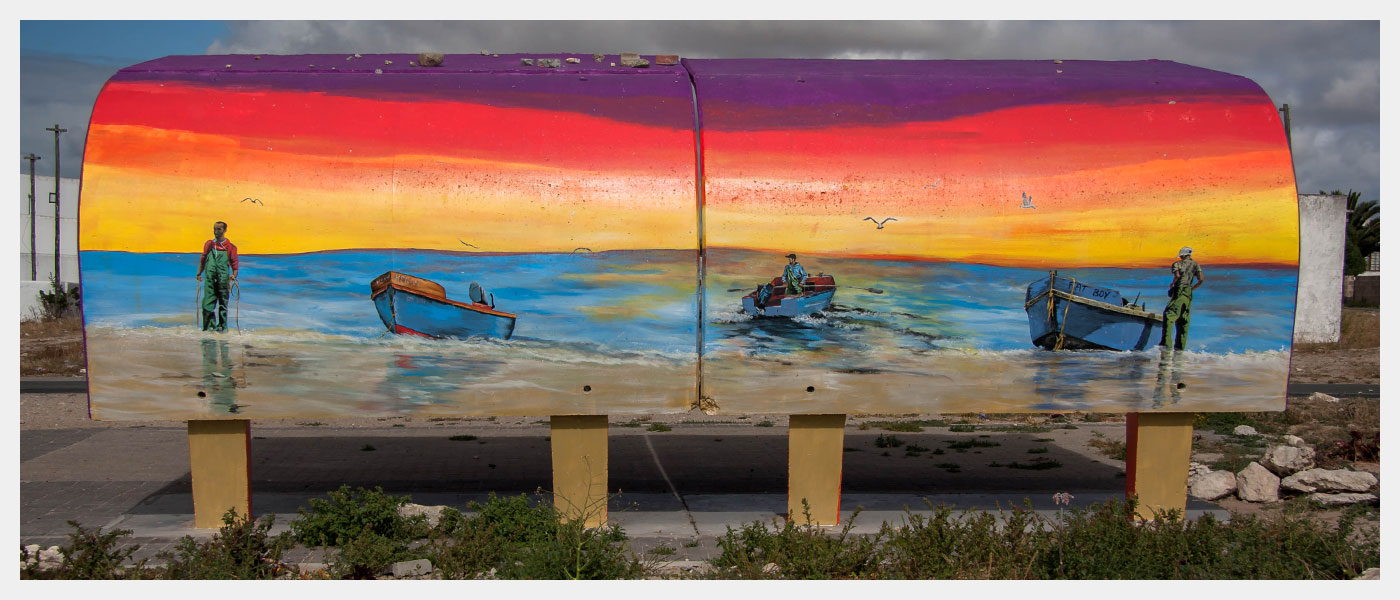
7 Days in Kliprug
The 7 days in my life with Kliprug, Paternoster's people and the absolute crown artist Lizbie Lourens who believed in my ability to paint on walls.
What a wonderful experience and privilege to be part of this fantastic project, to make Paternoster beautiful and everyone to be part of a peace-loving town on the beautiful West Coast.
Adrian Venter, your photos that inspired all these paintings on the cold cement speak volumes of your love for everything here, thank you very much.
Cindy Krischker Saville, such a special person who runs a big project like this. Thank you too for being the person I got to know as "she is worth gold for this village of ours"
It was freezing cold with children holding concerts all day and playing in the sand around us, but it's nice here❣️
And all the other painters too, you are awesome!
Grateful does not adequately describe how I feel here today.
Reviews from visitors
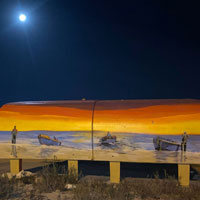 A huge shoutout to the incredible volunteers who are helping to beautify our beloved Paternoster! Your hard work and dedication don’t go unnoticed. Special thanks to Cindy from Paternoster Operative and her team for their efforts, and a big appreciation to Lizbie for the stunning artwork. When we all share our skills and passion, we can keep our village the true crown of the West Coast! 🫶🏽 - Adele Grosse (Sea Love)
A huge shoutout to the incredible volunteers who are helping to beautify our beloved Paternoster! Your hard work and dedication don’t go unnoticed. Special thanks to Cindy from Paternoster Operative and her team for their efforts, and a big appreciation to Lizbie for the stunning artwork. When we all share our skills and passion, we can keep our village the true crown of the West Coast! 🫶🏽 - Adele Grosse (Sea Love)
Paternoster, West Coast
Paternoster is one of the oldest fishing villages on the West Coast of South Africa. It is situated 15 km north-west of Vredenburg and 145 km north of Cape Town, at Cape Columbine between Saldanha Bay and St Helena Bay. The town covers an area of 194.8 hectare and has approximately 1883 inhabitants.

Own backyard, South African Break Aways
While my brother and his family from the UK are visiting us in sunny South Africa, it is almost mandatory that we drive to the beach every day.
Because the coastal towns on the West Coast are located so close to each other, we visited two of these seaside villages on one day. Paternoster is only a 30-minute drive from Langebaan, while Jacobsbaai is just around the corner from Langebaan with a 20-minute drive.
Paternoster is one of the oldest fishing villages on the West Coast of South Africa. Paternoster means ‘Our Father’, the first two words of the Lord’s Prayer in Latin and taking its name from the heartfelt prayers of shipwrecked Portuguese sailors.
While the family lay on the beach (and every now and then went for a quick swim to cool off), Berto and I went for a walk on the white 8km long beach.
It’s a beautiful pristine beach and one we don’t visit too often when we’re in Langebaan. The reason for this is probably because we are spoiled for choices when visiting the West Coast.
A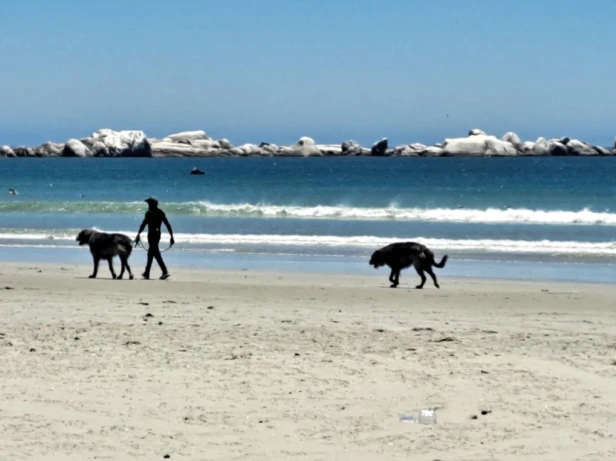 s we walked, we saw a man (Robert) approaching with two large animals (Irish Wolf Hounds). Because there are horse rides on the beach, we thought it might be two ponies. Great was our surprise, however, when they approached and two very large dogs calmly walked past us.
s we walked, we saw a man (Robert) approaching with two large animals (Irish Wolf Hounds). Because there are horse rides on the beach, we thought it might be two ponies. Great was our surprise, however, when they approached and two very large dogs calmly walked past us.
After about an hour in the sun we decided it was time for a light lunch and something cool to drink. Mondvol Koffiewinkel (translated to ‘Mouthful Coffee shop’) is perfectly located on the outskirts of Paternoster. The food was top notch, the coffee the best we’ve ever had and the service excellent – what a great way to end our day in Paternoster.
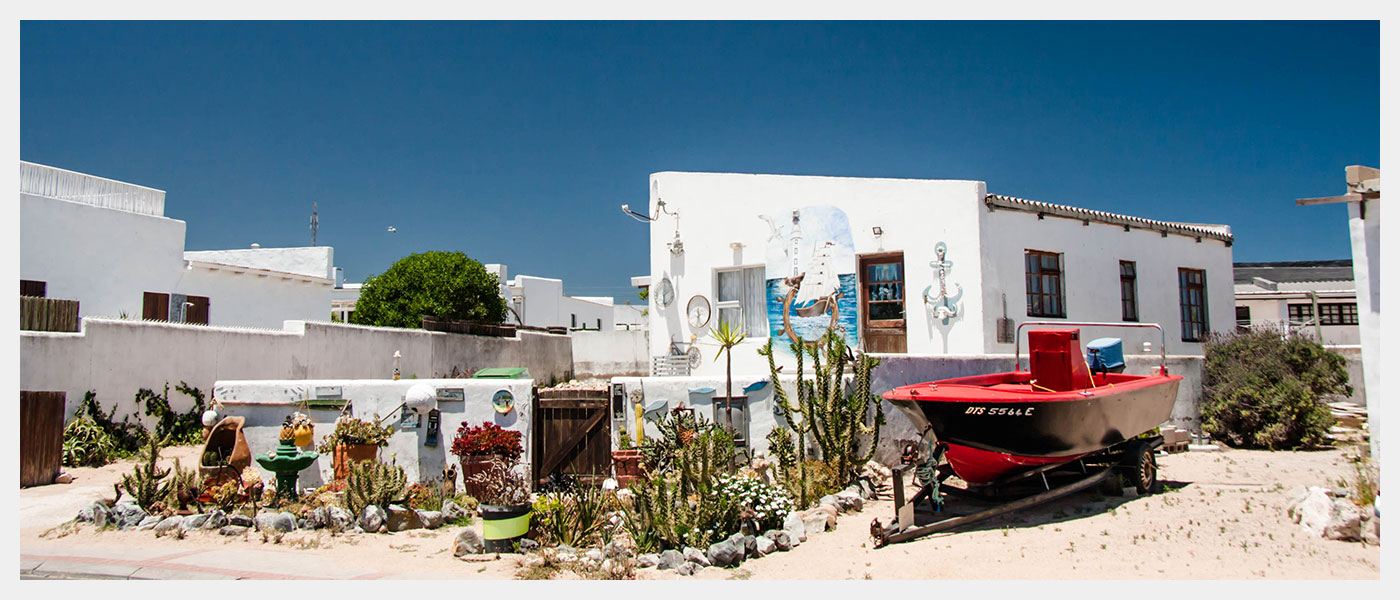
The seaside village harbouring grit and glamour
For us modern-day landlubbers, it's difficult to imagine the treacherous voyages sailors once took. But their relief must have been immense when they saw the coastal village of Paternoster. Enshrined in maritime lore, its name comes from the prayers of Portuguese sailors. In Latin, Paternoster means “Our Father” – and these words were on the lips of seamen crossing the ocean, facing shipwreck or fortune.
Today, you can embark on a trip here with much less risk of scurvy. Escape to this West Coast fishing village two hours from Cape Town, and immerse yourself in an oasis from the city.
Paternoster is world-famous for its lobster, and at one point fishermen canned and exported them to Paris. Colourful boats bring in the day’s catch, and their bounty is distributed to local families, restaurants, and fisheries.
The Paternoster Hotel houses a unique history. Its pub once served as a prison, but these days the Panty Bar is known for its unusual decor. Pairs of underwear stream from the ceiling in what began as the hotelier’s collection of ‘honeymoon panties’.
A five-kilometre drive from the village leads to the Cape Columbine Lighthouse, one of the last to be manually operated. Climb your way to the top and marvel at the unparalleled view. This lighthouse is usually the first to be seen by ships coming in from Europe, a landmark signalling that their journey is nearing its end.
Stay in rustic accommodation with Sea Shack or Die Opstal Cottages along the coastline. These pristine beaches are made for long strolls, bird-watching, and spotting whales and dolphins.
Learn to make quirky ceramic art at Stone Fish Studio, where weekend sculpture courses are run with out-of-town visitors in mind.
Indulge in fresh seafood and fine dining at Wolfgat, the 2019 Restaurant of the Year award winner. This 20-seater eatery comprises local staff with no formal training, and the head chef forages from the surrounding area to plate up truly homegrown meals. For a more casual meal, head to The Noisy Oyster.
In this sleepy haven layered with history and authenticity, sit back, relax, and unwind
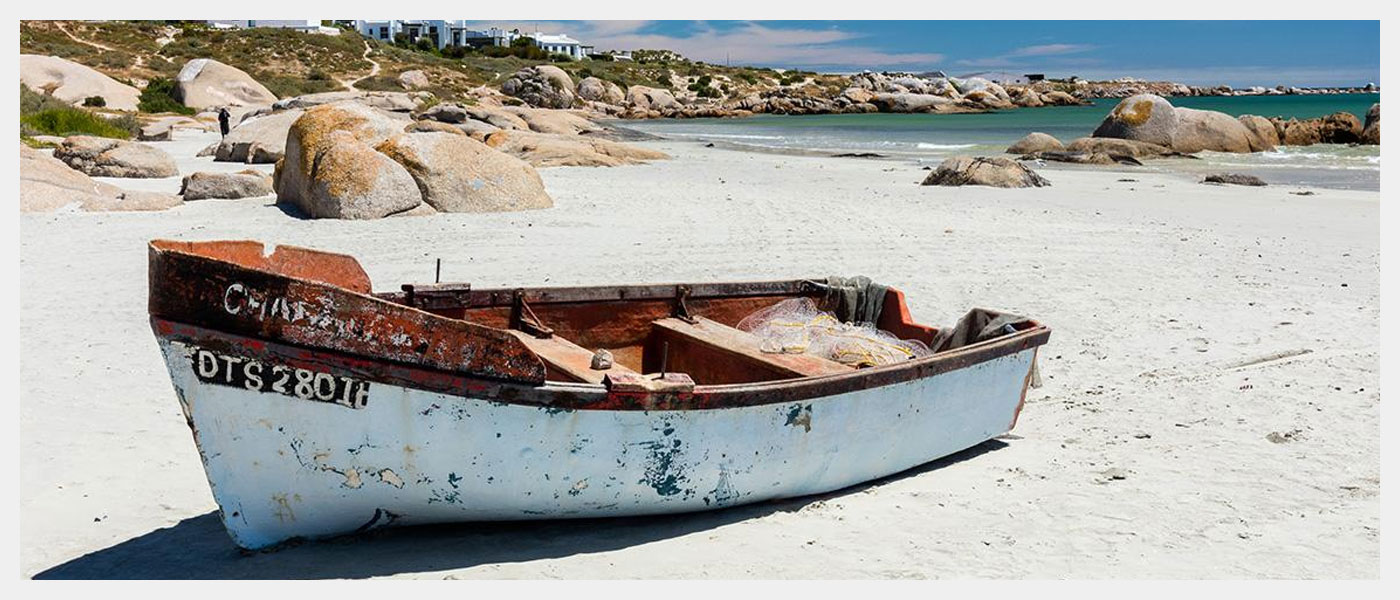
The Weskus is the Beskus
The Cape West Coast (Weskus) is a place awe-inspiring, jaw-droppingly beautiful, and so magical, you would need weeks to take it all in. Stretching from Malmesbury to the border of the Northern Cape at Touws River. The Cape West Coast is best known for its beautiful beaches and the quaint, towns that populate the region and the beautiful sight of the wild flowers in spring.
The Cape West Coast is best known for its beautiful beaches and the quaint, towns that populate the region and the beautiful sight of the wild flowers in spring.
The West Coast coastline is nothing short of picturesque. You won’t know if you’re really in South Africa or actually on a Greek island. Definitely enjoy the white beaches and turquoise waters, but be sure to also venture inland.
Towns such as Langebaan, Lambert’s Bay, Paternoster, Jocobsbaai, Saldanha have all become a home-away-from-home for many Western Cape locals and are havens for those looking to escape the city.
The area offers diverse scenery from calm turquoise ocean, magnificent sand dunes to incredible sandstone rock formations. The Cederberg is known for its harsh rocky outcrops, and the Rocklands Climbing area is a tick-box for any active climber – rookie or veteran – looking to test his skills.
Paternoster FAQ
Frequently Asked Questions about Paternoster
📅 Paternoster is a year-round destination, but the best time depends on what you’re looking for:
- 🌸 Spring (August – October): The famous West Coast wildflowers are in bloom, creating stunning landscapes.
- ☀️ Summer (November – March): Warm weather, perfect beach days, and festive vibes.
- 🔥 Winter (June – August): Cozy getaways, stormy ocean views, and delicious seafood feasts by the fire.
Paternoster offers a mix of relaxation and adventure. Here are some must-do activities:
- 🌊 Explore the beaches – Perfect for long walks, swimming, and photography.
- 🍽️ Indulge in fresh seafood – Visit top-rated restaurants like Wolfgat and Voorstrandt.
- 🚣 Go on an ocean adventure – Enjoy kayaking, whale watching, and fishing trips.
- 🏕️ Visit Cape Columbine Nature Reserve – Explore the lighthouse and scenic trails.
- 🛍️ Shop for local crafts – Discover handmade art, pottery, and unique souvenirs.
🚗 By Car – The best way to get to Paternoster is by car. It’s about 90 minutes from Cape Town via the R27 West Coast Road and R399.
🚌 Shuttle Transfers
- Paternoster Transfer +27 84 893 2003
- Fritz Shuttle Service +27 79 129 0047
- West Coast Shuttle Service +27 84 893 2003
Paternoster offers a variety of accommodation options to suit every traveler:
- 🏡 Self-Catering Cottages – Ideal for families and longer stays.
- 🏨 Guesthouses & B&Bs – Cozy and full of West Coast charm.
- 🌊 Luxury Lodges & Boutique Hotels – For those looking for an exclusive stay.
- ⛺ Camping (Nearby) – Cape Columbine Nature Reserve offers scenic camping spots.
No matter your budget or preference, Paternoster has the perfect place to stay!
